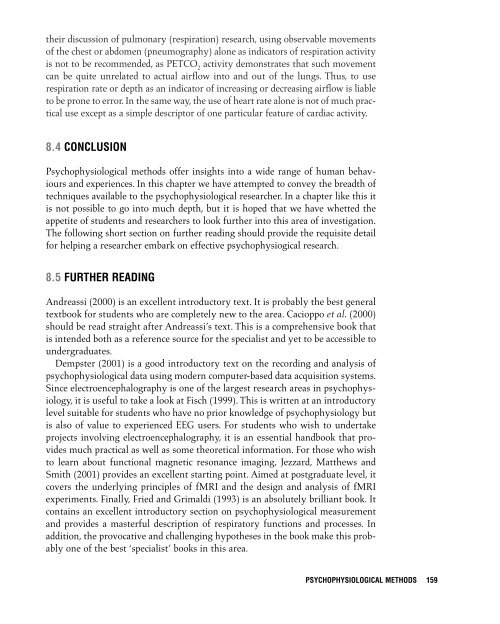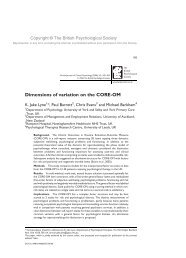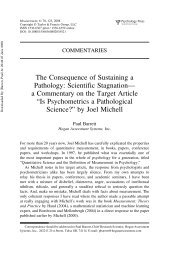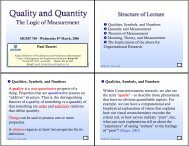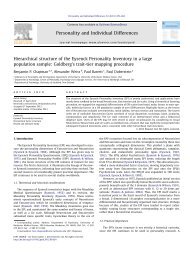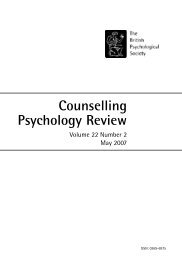Psychophysiological Methods - Paul Barrett
Psychophysiological Methods - Paul Barrett
Psychophysiological Methods - Paul Barrett
- No tags were found...
You also want an ePaper? Increase the reach of your titles
YUMPU automatically turns print PDFs into web optimized ePapers that Google loves.
Breakwell-3389-Ch-08.qxd 2/7/2006 8:49 PM Page 159their discussion of pulmonary (respiration) research, using observable movementsof the chest or abdomen (pneumography) alone as indicators of respiration activityis not to be recommended, as PETCO 2activity demonstrates that such movementcan be quite unrelated to actual airflow into and out of the lungs. Thus, to userespiration rate or depth as an indicator of increasing or decreasing airflow is liableto be prone to error. In the same way, the use of heart rate alone is not of much practicaluse except as a simple descriptor of one particular feature of cardiac activity.8.4 CONCLUSION<strong>Psychophysiological</strong> methods offer insights into a wide range of human behavioursand experiences. In this chapter we have attempted to convey the breadth oftechniques available to the psychophysiological researcher. In a chapter like this itis not possible to go into much depth, but it is hoped that we have whetted theappetite of students and researchers to look further into this area of investigation.The following short section on further reading should provide the requisite detailfor helping a researcher embark on effective psychophysiogical research.8.5 FURTHER READINGAndreassi (2000) is an excellent introductory text. It is probably the best generaltextbook for students who are completely new to the area. Cacioppo et al. (2000)should be read straight after Andreassi’s text. This is a comprehensive book thatis intended both as a reference source for the specialist and yet to be accessible toundergraduates.Dempster (2001) is a good introductory text on the recording and analysis ofpsychophysiological data using modern computer-based data acquisition systems.Since electroencephalography is one of the largest research areas in psychophysiology,it is useful to take a look at Fisch (1999). This is written at an introductorylevel suitable for students who have no prior knowledge of psychophysiology butis also of value to experienced EEG users. For students who wish to undertakeprojects involving electroencephalography, it is an essential handbook that providesmuch practical as well as some theoretical information. For those who wishto learn about functional magnetic resonance imaging, Jezzard, Matthews andSmith (2001) provides an excellent starting point. Aimed at postgraduate level, itcovers the underlying principles of fMRI and the design and analysis of fMRIexperiments. Finally, Fried and Grimaldi (1993) is an absolutely brilliant book. Itcontains an excellent introductory section on psychophysiological measurementand provides a masterful description of respiratory functions and processes. Inaddition, the provocative and challenging hypotheses in the book make this probablyone of the best ‘specialist’ books in this area.PSYCHOPHYSIOLOGICAL METHODS159


